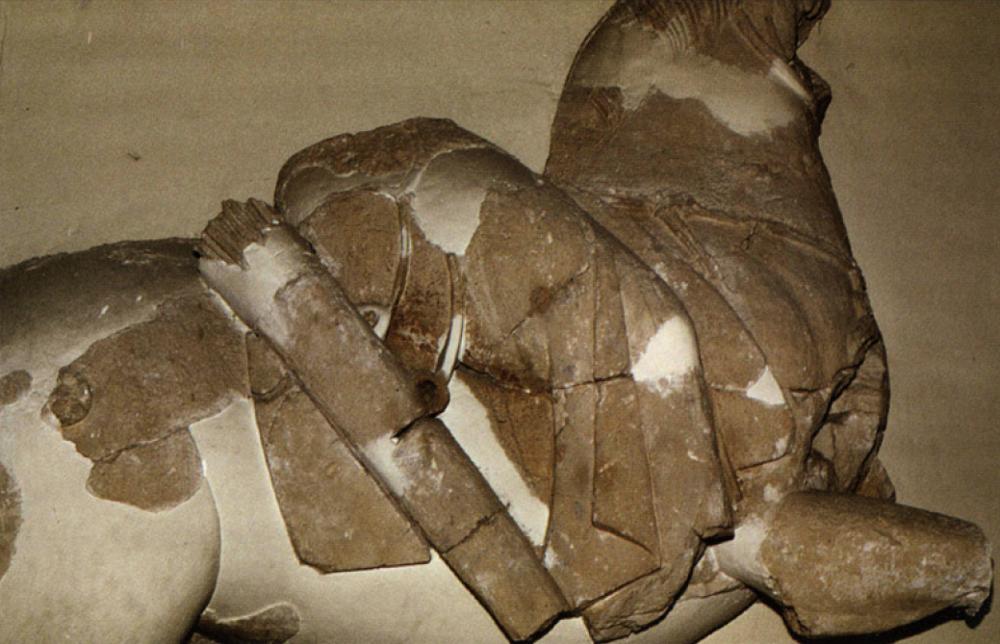
Try Amazon Fresh
Stucco Fragments of a Horse and Rider. Umayyad, Qasr al-Hayr al-Gharbi, Syria
mid-8th century AD, National Museum, Damascus



Stucco carving was abundant in the Umayyad palace whose ruins are now known as Qasr al-Hayr al-Gharbi. The largest and most striking was this bas-relief of a mounted archer whose quiver hung from straps to a waist-belt, is within a local Middle Eastern style of horse archery. (National Museum, Damascus, Syria; David Nicolle photograph)
Source: p.28, EH - 071 - The Great Islamic Conquests AD 632-750 by David Nicolle
Referenced as figure 121 in The military technology of classical Islam by D Nicolle
121. Fragmented statue from Qaṣr al Ḥayr al Gharbī, mid-8th century AD, Syrian, National Museum, Damascus.
Referenced on p.6, The Armies of Islam 7th-11th Centuries by David Nicolle & Angus McBride
Umayyad art shows many cultural influences. Note Iranian-style quiver on this fragmented early 9th century statue of a horse-archer, from the desert palace of Qasr al Hayr al Gharbi. (National Museum, Damascus)